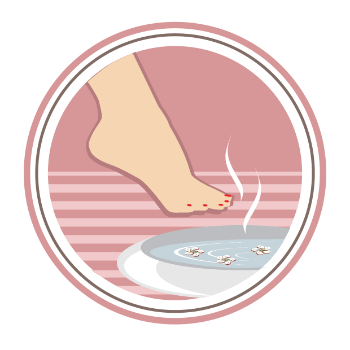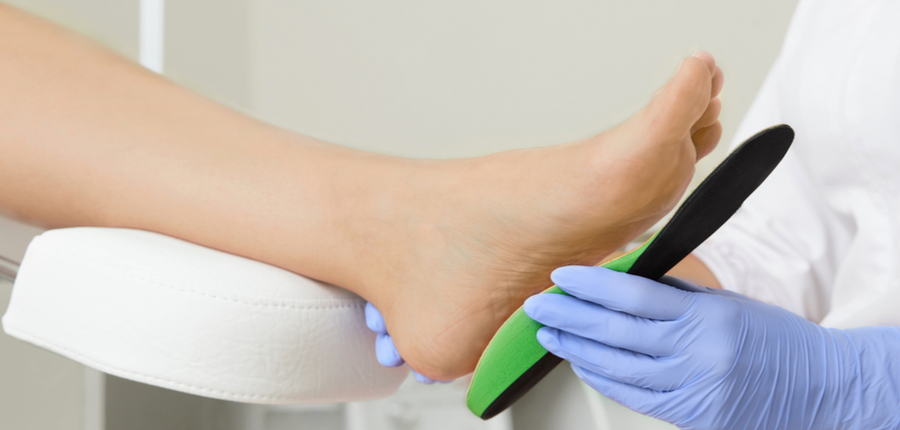
Foot pains can significantly depict minor or even dangerous health problems that should be addressed as soon as possible. Chronic pains in the foot and heel area might even be a sign of diabetes and if left alone can further damage the nerves. Any injuries can even result in amputation in such a severe case and serve as a reminder not to underestimate foot pains.
Orthotics refer to services and devices in the field of foot care that help in easing the pain, reducing pressure, and correcting the alignment of the feet or the ankles. There are available clinics and products throughout the country that specializes in such foot care. Podiatry clinics are specializing in foot treatment and capable of producing molded orthotic. The custom Orthotic prices are quite expensive because of the materials and equipment used in creating the device.
According to the American Orthopaedic Foot and Ankle Society, Orthotics can alleviate the symptoms and pain caused by common foot problems through relieving pressures directed to the foot. It can serve as support for motion especially for patients suffering from joint arthritis. In some studies, Orthotics can improve movement and posture of the patients.

Average Custom Orthotics Price
There are almost one million orthotics options available with an average cost of $10 to $800 based on the report provided by the American Orthopaedic Foot and Ankle Society. Products are even available at the local drugstores as off the shelf which cost about $10 to $20 for basic and $150 to $200 for advanced devices.
Meanwhile, semi-custom orthotics cost around $60 to $300 which are off the shelf products that can be modified. There are clinics that create full customized orthotics with special materials and cost around $300 to $800. 3D scanner and printer are used to create customized orthotics based on the requirement of the patient which can affect how much do Orthotics cost in the market.
Shopping for Orthotics
The American Podiatric Medical Association has listed approved podiatry clinics which provide Orthopaedic services. Crazy Shoe is a good example of a provider of affordable custom Orthotics price. The prices indicated in the table may vary depending on the requirement and condition of the patient. Modifications can also increase the overall cost of the Orthotics.
[wpdatatable id=70]
Everett Clinic also provides custom Orthotics around $88.50 to $250 for insoles and $26.75 for ankle braces. There are advantages in the service provided at a podiatry clinic that can justify how much do Orthotics cost.
- Consultation with a trained professional
- Accurate diagnostic of the foot to determine the root cause of the problem
- Determination of the adequacy of either using Orthotic therapy or surgery
- Provides suitable and effective Orthotics based on the patient’s condition
- Proper adjustment and alignment
In some studies, Orthotics are considered as a short-term solution and a prolonged use of the devices can result in complications. Also, the regular adjustment is necessary to keep the efficiency of the device. In both cases, the cost can accumulate over time which makes the consumers prefer the off the shelf Orthotics.
[wpdatatable id=71]
Off the shelf products are also available in online stores. The problem with the off the shelf, the products are not fitted well which might take time to find the right size. Also, the material and design might not be adequate and efficient enough to address the problem.
Additional Costs
Buying Orthotics at specialized clinics can yield additional cost in term of prerequisite examinations. Consultation fee with a trained professional can cost around $50 to $125 per visit which depends on the complication and type of clinic. X-rays are essential medical screening to diagnose the root of the problem and cost about $50 per examination. Some clinics include the cost of operating 3D scanner and molding in the retail price of custom Orthotics.
There are also financial options and mode of payment that patients can take advantage of. Insurance can reduce the consultation fee and the Orthotics depending on the coverage. Credit is also a viable option especially for patients with a good credit history.
Common Foot Problems
Foot pain is usually common because straining the muscles, inflammation of nerves, application of uneven pressure, and other physical activities. In minor cases, it can be treated with sufficient rest but orthotic devices can hasten the healing process.
- Ingrown toenails – occur when toenails are trimmed too short.
- Fungus infection – can occur during infection which may result to athlete’s foot and nail fungus.
- Fractures and Sprains (Toe and Ankle) – persistent pain caused by tearing of ligaments. They are usually depicted with swelling and discoloration around the area.
- Bunion – refers to a swelling or a bump at the big toe joint.
- Corns, Hammertoes, and Clawing of Big Toe – caused by applying continuous pressure at the toe and resulting to misshapen
- Warts – refers to a chronic viral infection that can result in painful sores near the sole area.
- Heel Pain – the result of straining the muscle tissues due to physical activities. Sufficient rest can resolve the problem. If persist, orthotics and ointment can ease the pain.
- Neuromas – swelling caused by irritation of the nerves due to pressure. Make sure to switch to comfortable shoes with pressure relieving insoles to address the problem.
- Diabetes – a severe case of a foot problem that can result in chronic pain due to inflammation of the nerves and dangerous if any injuries occur within the area. Worst case scenario, surgery is needed to recover completely and a possibility of amputating the limbs if necessary.
Additional Information
Orthotics are considered as a therapy and not a permanent solution. Although, in minor cases, orthotics are sufficient to completely address the problem. But in severe cases, patients must proceed with surgery to completely recover. Therefore, foot care is very important to sustain overall wellness. The common source of foot problem is usually sourced at using shoes that are not well suited.
Even a presence of small space inside the side of shoes can result in increased pressure and misalignment. Other factors are pointed toes, thin soles, and high heels that can significantly damage the foot due to pressure. Therefore, as a preventive measure, make sure to buy well-fitted shoes with shock absorbent sole and sufficient space at the toe area. Also, invest in shoes with breathable and comfortable materials which can reduce the pressure a lot.